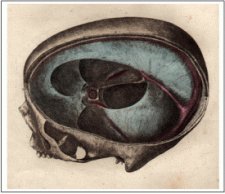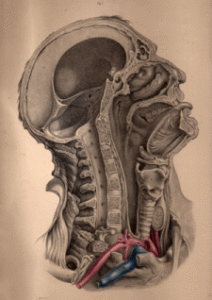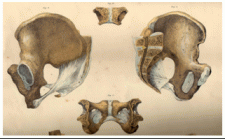
Cranio-sacral Osteopathy
What is Cranio-sacral Osteopathy?
 Cranio-sacral or cranial osteopathy is a very gentle type of osteopathic treatment. It encourages the release of stresses and tensions throughout the body, including the head. It is a subtle yet extremely effective approach. It may be used in a wide range of conditions, and for people of all ages – from birth to old age.
Cranio-sacral or cranial osteopathy is a very gentle type of osteopathic treatment. It encourages the release of stresses and tensions throughout the body, including the head. It is a subtle yet extremely effective approach. It may be used in a wide range of conditions, and for people of all ages – from birth to old age.
Osteopaths often have training in different specialities. These may include sports injuries, paediatrics, and chronic pain, such as that associated with osteoarthritis. Cranial osteopathy can be used as a very gentle treatment approach in all of these areas.
Catherine was initially introduced to cranio-sacral osteopathy in her undergraduate training at the British School of Osteopathy. She was fortunate to have many of the best tutors in this field providing undergraduate training in 1991-1993. These tutors were also involved in many of the post-graduate training courses she has attended at the British School of Osteopathy.
Catherine is a member of the Sutherland Society – the largest UK organisation for Cranial Osteopaths. This is a voluntary Register for Osteopaths who have undertaken additional training in cranio-sacral osteopathy, and use this approach within the scope of their professional practice.
Palpation of the Cranial Rhythm
 Cranial osteopaths are trained to feel a very subtle, rhythmical shape change that is present in all body tissues. This is called Involuntary Motion or the Cranial Rhythm. The rhythm was first described in the early 1900’s by Dr. William G. Sutherland and its existence was confirmed in a series of laboratory tests in the 1960’s and 1970’s.
Cranial osteopaths are trained to feel a very subtle, rhythmical shape change that is present in all body tissues. This is called Involuntary Motion or the Cranial Rhythm. The rhythm was first described in the early 1900’s by Dr. William G. Sutherland and its existence was confirmed in a series of laboratory tests in the 1960’s and 1970’s.
The movement is of very small amplitude. It takes practitioners a considerable time and training to achieve the very finely developed sense of touch that is necessary to feel it.
Disruption to the Cranial Rhythm
Tension in the body can disrupt the cranial rhythm. Practitioners compare what your rhythm is doing to what they consider ideal. This shows them what stresses and strains your body is under at present, and what tensions it may be carrying as a result of its past history.
When we experience physical or emotional stresses our body tissues tend to tighten up. The body may have been able to adapt to these effects at the time, but a lasting strain often remains. When a cranio-sacral osteopath palpates a patient’s cranial rhythm, they get an insight into the overall condition of your body, for example if it is healthy, or stressed and tired.
Tensions which remain held in the body can restrict its free movement. Gradually over time, the body may find it more and more difficult to cope with accumulated stresses, and symptoms may develop.
You may also be interested to read the following pages, which include links t o further information on the Sutherland Society website and the Sutherland Cranial College website.
o further information on the Sutherland Society website and the Sutherland Cranial College website.
Ligaments of the pelvis
Copyright ©2012 - 2023 Catherine Tiphanie. All Rights Reserved. Privacy Policy
